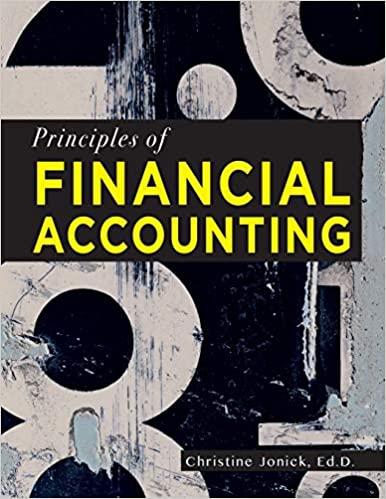Answered step by step
Verified Expert Solution
Question
1 Approved Answer
14. Wind Fall, a manufacturer of leaf blowers, began operations this year. During this year, the company produced 10,000 leaf blowers and sold 8,500. At

14. Wind Fall, a manufacturer of leaf blowers, began operations this year. During this year, the company produced 10,000 leaf blowers and sold 8,500. At year-end the company reported the following income statement using absorption costing: Sales (8,500 x $45) Cost of goods sold (8,500 x $20) Gross margin Selling and administrative expenses Net income $382,500 170,000 $212,500 60,000 $152,500 Production costs per leaf blower total $20, which consists of $16 in variable production costs and $4 in fixed production costs (based on the 10,000 units produced) Fifteen percent of total selling and administrative expenses are variable. Compute net income under variable costing. a) $158,500 b) $146,500 c) $237,500 d) $206,500 e) $246,500 15. The following data concerns a proposed equipment purchase $58,000 $3,000 Salvage value Estimated useful life Annual net cash flows Depreciation method 5 years $18,000 Straight-line Assuming that net cash flows are received evenly throughout the year, the accounting rate of return is: 24.13% a) 20.98% 22.95% 59.00% 25 45% b) c) d) e) 16. Teague Plumbing has received a special one-time order for 1,500 toilets (units) at $75 per unit. Teague currently produces and sells 7,500 units at $100 each. This level represents 75% of its capacity. Production costs for these units are $75 per unit, which includes $70 variable cost and $5 fixed cost. To produce the special order, shipping costs of $10,000 will be incurred. Management expects no other changes in costs as a result of the additional production. Should the company accept the special order? No, because additional production would exceed capacity. No, because incremental costs exceed incremental revenue Yes, because incremental revenue exceeds incremental costs Yes, because incremental costs exceed incremental revenues. No, because the incremental revenue is too low. a) b) c) d) e) Of the following costs, which is both a prime cost and a conversion cost? a) Direct Material b) Fixed Cost 17. c) Factory Overhead d) Variable Cost e) Direct Labor
Step by Step Solution
There are 3 Steps involved in it
Step: 1

Get Instant Access to Expert-Tailored Solutions
See step-by-step solutions with expert insights and AI powered tools for academic success
Step: 2

Step: 3

Ace Your Homework with AI
Get the answers you need in no time with our AI-driven, step-by-step assistance
Get Started


